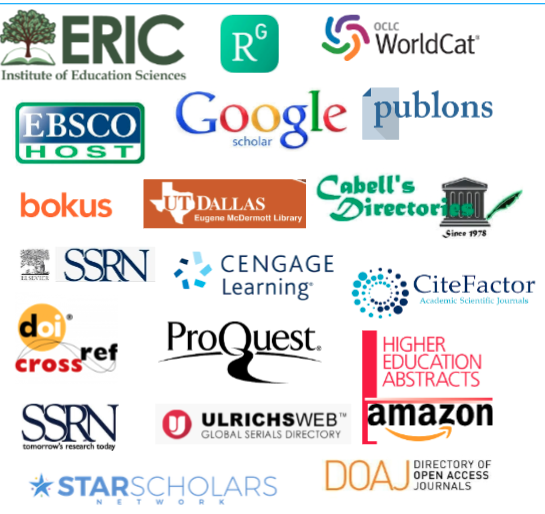Teaching Immigration Issues in Elementary School Classrooms on the US/Mexico Border
Transborder Pedagogy and Its Significance
Keywords:
transborder pedagogy, interdisciplinary curriculum, elementary social studies, immigration issuesAbstract
This case study uncovers how controversial issues such as the recent influx of refugees and immigrants were being addressed in upper elementary classrooms on the United States (US) side of the US/Mexico border. Public school administrators and sixth-grade teachers from two school sites participated. Transborder pedagogy contextualized the findings of the research. With the COVID-19 pandemic, classroom discussions of border issues have been superseded with other concerns. This research underscores the immediacy of transborder pedagogy during times of uncertainty.
Downloads
References
Alleman, J., & Brophy, J. (2010). Effective integration of social studies and literacy. In M. E. McGuire & C. Bronwyn (Eds.), Making a difference: Revitalizing elementary social studies (pp. 51–66). National Council for the Social Studies.
Cashman, T. G. (2013). Border pedagogy as a conduit: Comparing the perspectives of educators in Malaysia, Mexico, and Canada. Multicultural Education, 20 (2), 2-9.
Cashman, T. G. (2016). Navigating the intersection of place-based pedagogy and border pedagogy: Resituating our positions through dialogic understandings. International Journal of Critical Pedagogy, 7 (1), 29-50.
Cashman, T. G. (2019). Transnational educational research in four countries: Promoting critical border praxis. Journal of Research, Policy & Practice of Teachers & Teacher Education, 9 (1), 46-57.
Colucci, A. (2011, February 9). Interdisciplinary lessons in a time of testing. Education Week. https://www.edweek.org/tm/articles/2011/02/09/tln_interdis.html
Creswell, J. W. (2013). Qualitative inquiry & research design: Choosing among five approaches (3rd ed.). Sage.
Garza, E. (2007). Becoming a border pedagogy educator: Rooting practice in paradox. Multicultural Education, 15(1), 2-7.
Giroux, H. A. (1988). Border pedagogy in the age of postmodernism. Journal of Education, 170(3), 162-181.
Giroux, H. A. (1991). Border pedagogy and the politics of postmodernism. Social Text, 28, 51-67.
Giroux, H. A. (2005). Border crossings: Cultural workers and the politics of education (2nd ed.). Routledge.
Glesne, C. (2011). Becoming qualitative researchers: An introduction. Pearson.
Gonzales, R. G. (2016). Lives in limbo: Undocumented and coming of age in America. University of California Press.
Gruenewald, D. A. (2003). The best of both worlds: A critical pedagogy of place. Educational Researcher, 32(4), 3-12.
Flores, B. B., & Clark, E. R. (2002). El desarrollo del proyecto alianza: Lessons learned and policy implications. Arizona State University, Southwest Center for Educational Equity and Language Diversity.
Fuentes, C. M., & Peña, S. (2010). Globalization, transborder networks, and U.S.-Mexico border cities. In K. Staudt, C. Fuentes, & J. Monárrez Fragoso (Eds.), Cities and citizenship at the U.S.-Mexico border (pp. 1-20). Palgrave Macmillan.
Hess, D. E., & McAvoy, P. (2015). The political classroom: Evidence and ethics in democratic education. Routledge.
Heyman, J. (2017). Contributions of US/Mexico border studies to social theory. In
C. Velez-Ibanez, C. & J. Heyman, J. (Eds.), The US/Mexico transborder region: Cultural dynamics and historical interactions (pp. 44-64). University of Arizona Press.
Kasanjian, C. J. (2011). The border pedagogy revisited, Intercultural Education, 22(5), 371-380.
Kladzyk, R. & Ramos Pacheco, M. (2021, May 10). Indigenous diaspora: Leaving home and the journey across Mexico. El Paso Times. https://www.elpasotimes.com/story/news/2021/05/10/texas-immigration-indigenous-diaspora-leaving-home-and-journey-across-mexico/5004360001/
Martínez, O. (1994). Border people: Live and society in the U.S.-Mexico borderlands. University of Arizona Press.
New American Economy (2019). Understanding the impact of refugee resettlement in the United States: Data analysis, stories, and resources for lesson planning. Social Education, 83(6), pp. 330-335.
Oliveira, G. & Segel, M. (2022). Im/migrant children’s education experiences and families sacrifices in a global pandemic. Aera Open. 10.1177/23328584221092305.
Pace, J. L. (2019). Contained risk-taking: Preparing preservice teachers to teach controversial issues in three countries, Theory and Research in Social Education, 47(2), 228-260.
Ramirez, P.C., Ross, L., & Jimenez-Silva, M. (2016). The intersectionality of border pedagogy and Latino/a youth: Enacting border pedagogy in multiple spaces. The High School Journal, 99(4), 302-321.
Reyes, M., & Garza, E. (2005). Teachers on the border: In their own words. Journal of Latinos and Education, 4(3), 153-170.
Romo, J. J., & Chavez, C. (2006). Border pedagogy: A study of preservice teacher transformation. The Educational Forum, 70(2), 142-153.
Shear, S., Tschida, C., Bellows, E., Buchanan, L, & Saylor, E. (2018). (Re)imagining elementary social studies: A controversial issues reader. Information Age Publishing.
Smets, F. (2019). Why we need to teach about refugees. Social Education, 83(6), 311-316.
Stake, R. (2000). Case studies. In N. Denzin & Y. Lincoln, (Eds.), Handbook of qualitative research (2nd ed., pp. 435-454). Sage Publications.
Staudt, K., & Spener, D. (1998). The view from the frontier: Theoretical perspectives undisciplined. In D. Spener & K. Staudt (Eds.), The U.S.-Mexico border: Transcending divisions, contesting identities (pp. 3-33). Lynne Rienner.
US News & World Report (2022, March 28). K-12 directory. https://www.usnews.com/education/k12
Valencia, R. R. (2010). Dismantling contemporary deficit thinking: Educational thought and practice. Routledge.
Valenzuela, A. (2017). Subtractive schooling: U.S.-Mexican youth and the politics of caring. State University of New York Press.
West, C. (2019, June 19). Thousands of students cross the U.S.-Mexico border every day to go to college. The Hechinger Report, https://hechingerreport.org/
Downloads
Additional Files
Published
Issue
Section
License
Copyright (c) 2022 Timothy G Cashman

This work is licensed under a Creative Commons Attribution-NonCommercial-NoDerivatives 4.0 International License.







